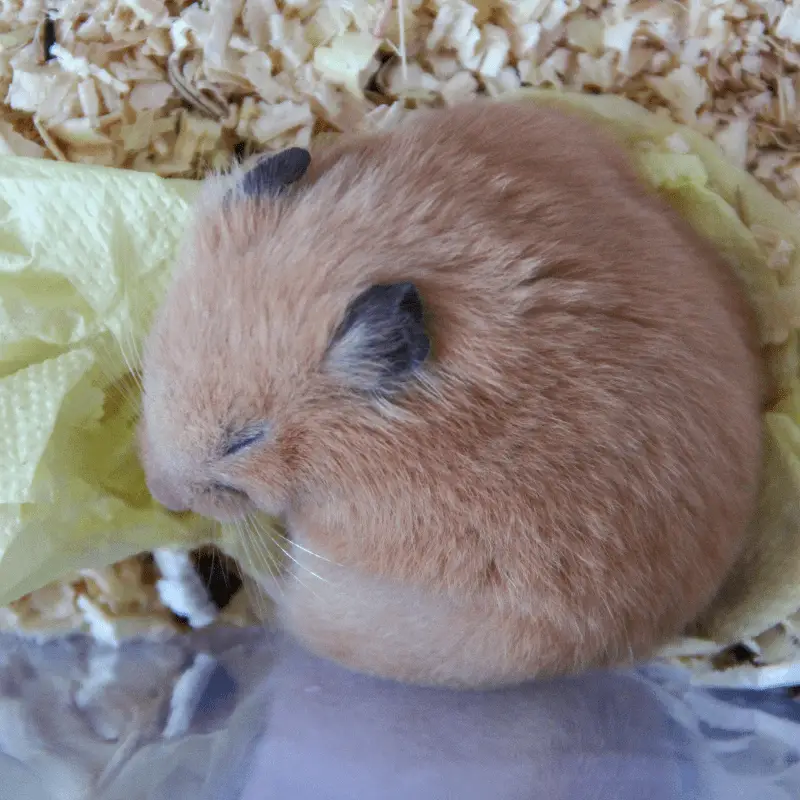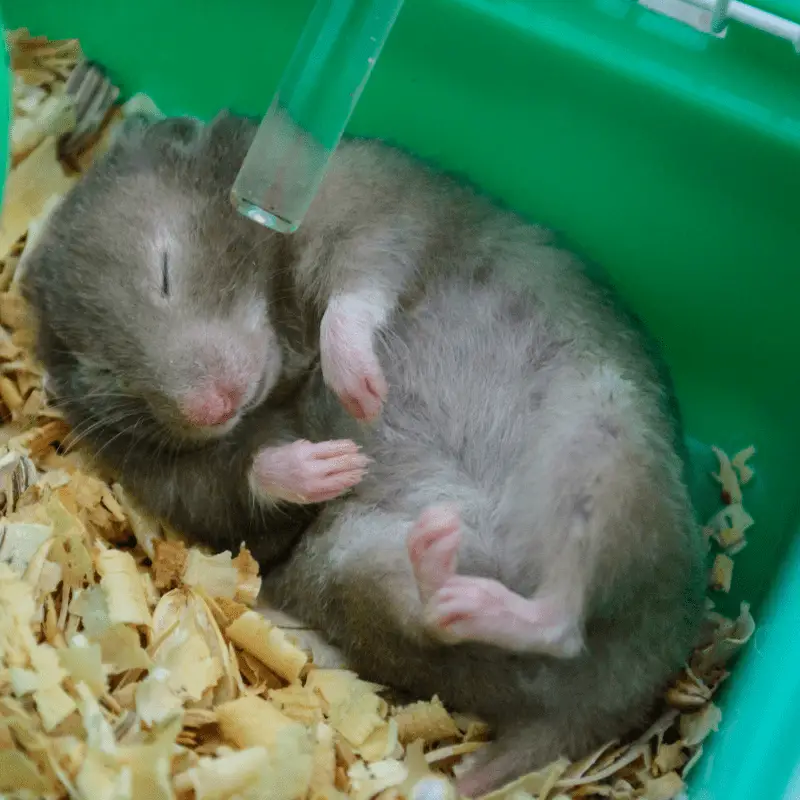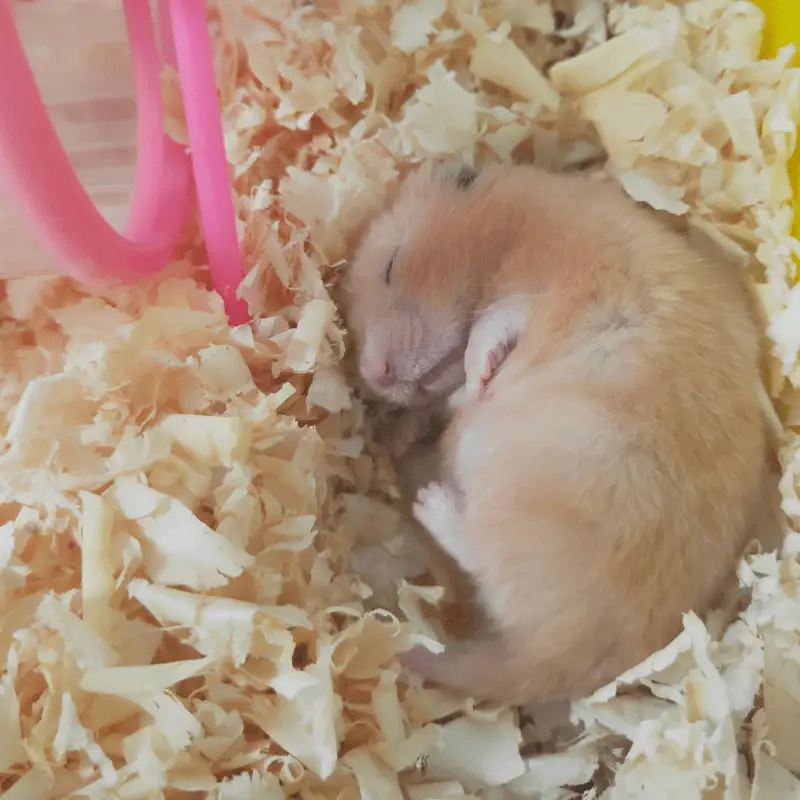As the temperature goes down, and you turn up the heat, the urge to jump to the bed and bury yourself under a duvet is irresistible. There are many animals out there that experience the same feeling. That is what the reptiles and amphibians do during winter months. They hibernate. While humans do not hibernate like them, we do feel lethargic and pray that we get to stay in bed a little bit longer. That raises the question; does your pet hamster feel the same during the winter months? Let’s find out.
Hamsters can hibernate during the winter months to beat the extreme weather conditions. Hamsters can also go on hibernation if the food resources fluctuate or deprived of natural light for an extended period.
During hibernation, the metabolic rate of the hamster goes down. It stops moving around as well. Sometimes it becomes difficult to understand whether hamsters are hibernating or have fallen ill.
It is hard to believe, but even the most caring and concerned hamster owner can make mistakes about caring for their pets. Forgetting to turn on the heater or keeping a window open can be a bit uncomfortable for you, but it can be deadly to your hamster. With each of the slight changes, it can go on hibernation. That can make it suffer from hyperthermia or dehydration.
To know more about hamster hibernation, and the health hazards that your hamster can suffer during this time, you should check the following section of this article.
Understanding the basics of hibernation

Hibernation is a process when an animal slows down its heart rate to conserve energy and survive the brutal winter months without eating much or in some cases, anything at all. While some animals move less frequently while hibernating, others go into a deep sleep state and do not wake up till the temperature starts to spike. During this time, the body temperature of the hibernating animal starts to drop. That’s what happens when the hamsters go into hibernation.
The Syrian hamsters thrive in the temperature range between 65 degrees to 75 degrees. When the temperature goes below 65 degrees, the hamster’s first reaction is to go on hibernation. It helps them to save energy.
During this time, his heart rate slows down as the little furry animals try to conserve the energy to survive the weather condition, that the hamster is not naturally equipped to withstand.
As an owner of hamsters, you do not want your hamster to hibernate as he can die from the exposure to the dehydration or the cold weather. However, the dwarf hamsters are naturally found in the places where the temperature drops significantly in winter months. That might be the reason why they do not go on hibernation during the colder months.
Types of Hibernation
There are two different types of hibernation that animals tend to use. One is seasonal, and the other one is permissive hibernation.
Seasonal Hibernation
This type of hibernation happens only during a particular time of the year. When the food supply is abundant during the summer months, animals, like squirrels and bears, eat many nutritional elements and fatten themselves to battle down the winter months. During the winter period, these animals go on hibernation.
Permissive Hibernation
As the name suggests, this hibernation has nothing to do with the weather conditions. It can happen any time during the year if the animal faces sudden changes to which he is not accustomed to at all. The sudden change in temperature or a sudden lack of food supplies can send the animals into hibernation. This type of hibernation is not long term. It generally lasts for the only couple of days or even a few hours.
Hamsters Hibernation Risk
Hamsters are not supposed to hibernate at all. So, the seasonal hibernation is out of the question. However, the hamsters can go on the permissive hibernation. During which they are considered to go on a deep sleep. However, as they are not supposedly going on hibernation naturally, there is a real danger to their life. Their body is not well equipped to survive the hibernation procedure. That is what that can lead them to dehydration or hypothermia.
Do all Hamsters hibernate?
All hamsters have the ability to hibernate if they need to, but they should not hibernate as its unsafe for a pet hamster. If you feed and hydrate your hamster regularly, there is no reason why your hamster should hibernate at all. It would be best to keep the hamster cage cool in the summer months and a warmer place during the winter months. Never leave a window open next to your hamster’s cage, or take them out into direct sunlight.
If the temperature drops around 60 degrees Fahrenheit, then your hamster might become lethargic. However, suppose the temperature falls to 50 degrees Fahrenheit. In that case, your hamster could fall into the permissive hibernation and may seem lifeless to you, and some owners mistake a hamster for being dead.
Being originated in Syria’s deserts, the Syrian hamsters are not that familiar with the bitter and icy nights. That might be the reason why they often go into the permissive hibernation to survive the colder temperature. The hibernation rates of Syrian hamsters are much higher than that of the other breeds.
The Russian and the dwarf hamsters are generally found in the colder region. That means they have adapted to the weather conditions long ago. Their longer and thicker fur coats save them from the bitterly cold winds. It also helps them to function in colder conditions. That might be the reason why these hamsters do not feel the need to go on hibernation.
How many hours does a hamster sleep?

A healthy and perfectly alright hamster can sleep for around 8 to 12 hours per day. However, just like their human friends, some hamsters can be lazier than the others and can enjoy extended naps as well.
Observe your hamster and understand how much sleep does it require when it is healthy. It would help you to notice whether your hamster is suddenly sleeping for a much longer period. Extended hours of sleep might be the first sign that your hamster is going in hibernation.
Signs that your hamster is going into hibernation
Understanding the signs indicating that your hamster is going on hibernation might help you to stop it. There is no doubt that looking into the cage with a hibernating hamster is a pretty distressing sight.
If you know the symptoms beforehand, you can stop the situation from occurring. Here are some signs that should tell you that your hamster is preparing to go on a hibernation.
- Shivering
- Sleeping longer than usual or becoming lethargic
- They are not touching their food or drink.
- Having cold ears, feet and nose
These physical signs are a dead giveaway that your hamster is going into hibernation. However, some behavioural factors can help you understand whether your hamster is preparing for hibernation or not.
Be careful if your hamster starts to build a giant nest or starts burrowing more in-depth in the cage to get extra warmth. In this case, take necessary actions immediately and make sure that your hamster is comfortable. It could stop the hibernation process right in its tracks.
Is my hamster hibernating or dead?
Sadly, hamsters do die and don’t live very long compared to humans. If you have found your hamster inside the cage motionless, you must work out whether the hamster has gone into hibernation or is dead. The following checks can help you to find the answer to your question.
- Carefully Pick up your hamster and check for any signs of life. One of the easiest ways to do that is to put up a mirror or spoon to its face to see if it creates any mist. It is the simplest way to make sure they are breathing.
- Lightly stroke your hamster to see if there is body movement at all. Also, keep an eye out for its whiskers to check whether it is twitching.
- Feel the body warmth. Even during the hibernation procedure, the hamster will be maintaining a steady body temperature, even if it might be slightly on the cooler side than usual.
- Try to move the limbs of your hamster to check whether it is limp enough to manipulate. If the limbs are stiff and cold, your hamster has more than likely sadly died.
Recommended Read:
How to stop my hamster going into hibernation?
Positioning of cage
Even the lightest of drafts can make your hamster catch a chill. During winter months, do not keep their cages close to the doors and windows of your home. You should also not place the hamster directly above or next to the elements that can overheat their enclosure.
Extra bedding
Hamsters love to create burrows and bury themselves inside their bedding. Put a bit of extra bedding in their cages during the winter months to offer them comfort. However, do not forget to change the bedding regularly.
Fumes
In your home, items, like wood-burning stoves, fires, and certain pans can create fumes that can be harmful to hamsters. Keep their cages in the rooms where such fumes can not generate.
Plenty of daylight
As the hamsters also suffer from Seasonal Affective Disorder, you should make sure that they get plenty of daylight. It would help them not to suffer from depression or anxiety which can lead to permissive hibernation.
Playing
Regularly playing and handling your hamster will keep them active and keep up with noticing your hamster’s potential health issues.
How to bring a hamster out of hibernation
Once you are sure that your hamster is hibernating, you need to bring it out of it. Here are some procedures you can follow.
Body Heat
Pick the motionless body of the hamster up and keep it close to your body. Use your body heat to offer warmth to the hamster. Hold it in this position for at least 30 minutes and check whether it shows any changes or acting alert.
Hot water bottle
Wrap your hamster in a towel with a water bottle full of warm water only. Make sure that your hamster is not touching any part of the hot water bottle. Also, make sure that the towel is not too hot. This process will warm its body and bring it out of hibernation.
What to do with a hamster that’s just come out of hibernation?
Once your hamster starts acting more alert, you should try to feed him a bit of warm water. Use a medicine dropper to make sure that your hamster is drinking it. Before giving it to the hamster, check the temperature of the water.
At this point, you can contact your veterinarian professional for more aftercare advice, and they can also diagnose and check your hamster through visual aid. Remember to keep them warm on the trip to and from the vets.
Conclusion
Overall, the key is no to panic. If you find your hamster motionless in its cage hibernating, you should not push the panic button. Instead, try to calmly handle the situation, and try to enhance its temperature. That being said, you should try to take precaution to make sure that your hamster does not go on hibernation in the first place. Take all the precautionary steps discussed above, and it will make a real difference in your hamster.

